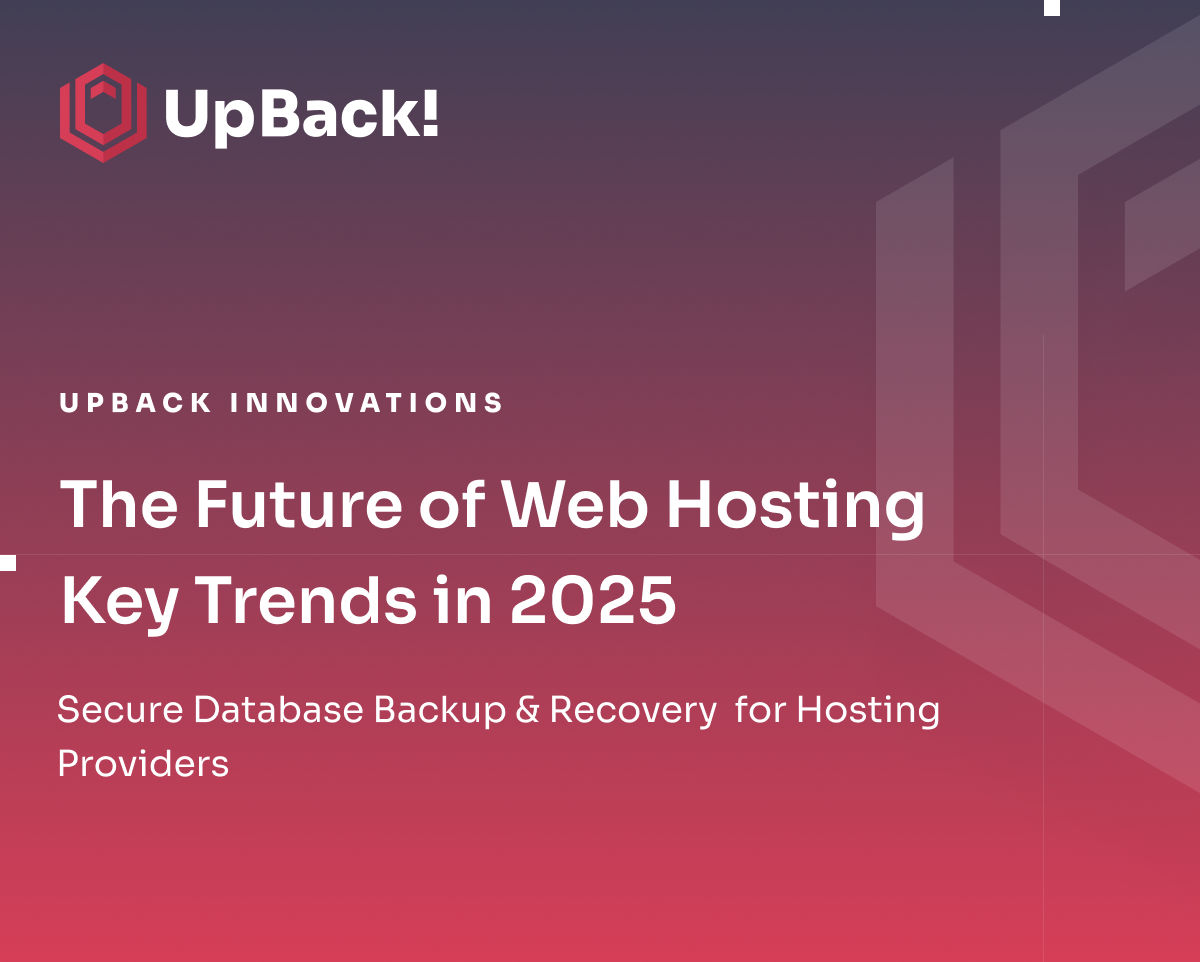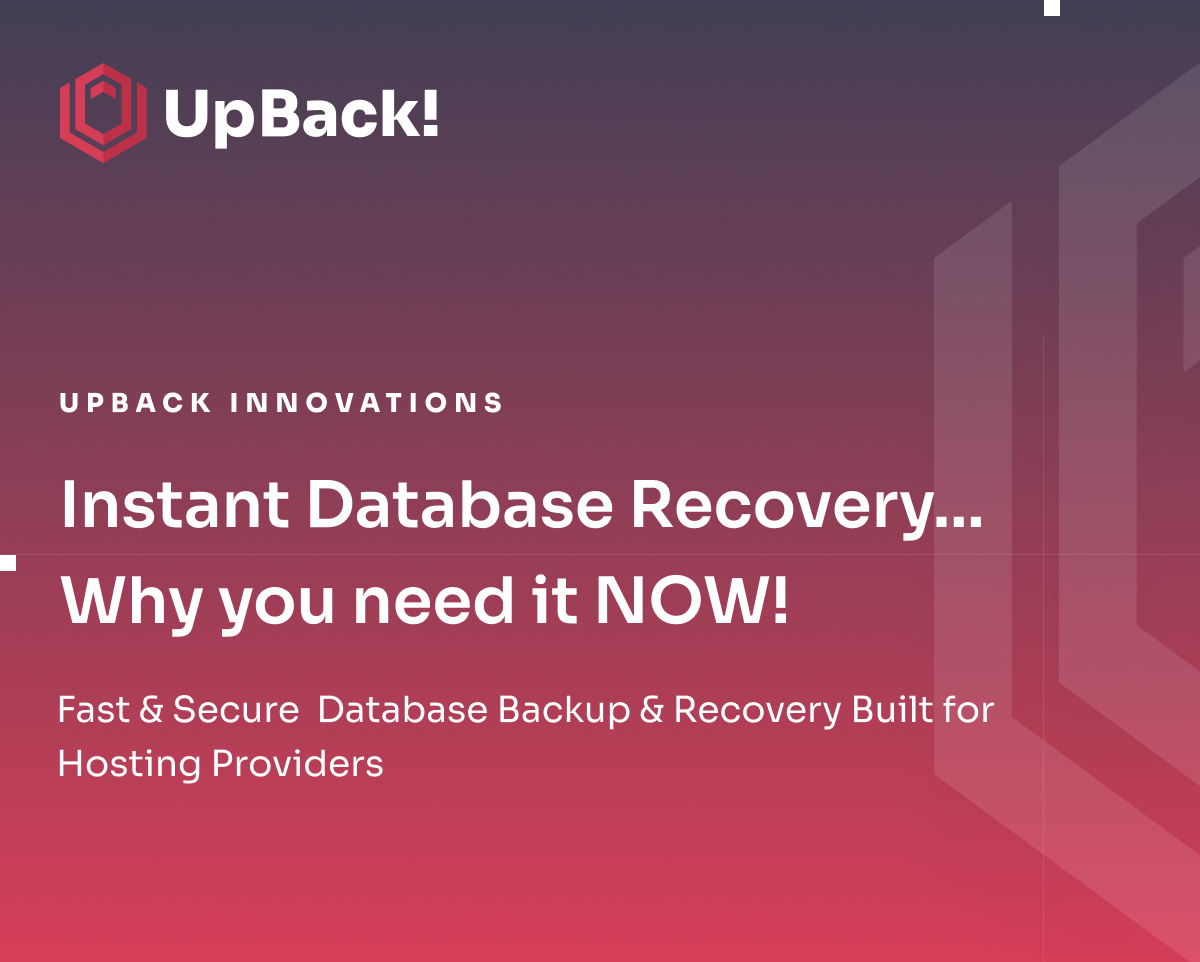Are virtual machine snapshots a reliable method for database backups?
The ubiquity of cloud services and processes in today's world is no longer up for debate. The major cloud suppliers have a foothold on how we store and interact with our data, and this is only gaining popularity.
In this "cloud-first world," Virtual Machine Snapshots (VM snapshots) are increasingly becoming popular as a substitute for more robust database backups. These snapshots capture the VM's state at a specific moment, enabling quick and convenient recovery. They are particularly favoured in cloud environments due to their ability to simplify the backup process and provide a consistent method across various platforms.
However, while virtual machines offer exciting mechanisms for backing up databases, there is usually no substitute for the flexibility and safety provided by tools dedicated to backing up and recovering databases, especially for production databases and high-performance workloads.
This is particularly critical in light of data loss statistics: in 2022, 35% of companies that experienced a data disruption were unable to recover their data. The leading causes of permanent data loss include a lack of backups, malware corruption or encryption, and data loss between backups.
These statistics underscore the importance of reliable and comprehensive backup solutions to ensure data integrity and recoverability in all circumstances.
“So, are Virtual Machine Snapshots truly reliable for database backups?”
Given the risks and the high stakes of data loss, it's essential to delve deeper into their limitations and consider more robust alternatives for safeguarding your critical data. As with all technology, VM snapshots have their place, but let's uncover some of the pros and cons, and what you can do as a business to protect yourself and your clients in the worst-case scenario.
VM Snapshots vs Backups: A Practical Comparison
Understanding Virtual Machine Snapshots
Explanation of VM Snapshots
Virtual Machine Snapshots capture the state of a virtual machine at a specific point in time, including the VM's disk state, memory state, and hardware configuration. This effectively creates a 'snapshot' of the VM's current state.
When a snapshot is taken, it allows for the preservation of the VM's state without stopping the machine, making it a seamless and non-disruptive process.
Snapshots work by creating a differencing disk, which stores all the changes made to the VM after the snapshot is taken. The original disk remains unchanged, and any modifications are written to the differencing disk.
This approach enables users to revert the VM back to its previous state by discarding the differencing disk, effectively rolling back all changes made since the snapshot was taken.
Use Cases
VM snapshots are particularly beneficial in several scenarios, especially within test and development environments:
- Testing and Development: Developers often use snapshots to create a stable base environment to test new features or configurations. If something goes wrong, they can quickly revert to the snapshot and start again, saving time and resources.
- Software Upgrades and Patches: Before applying a software upgrade or patch, administrators can take a snapshot of the VM. If the upgrade causes issues, they can easily revert to the pre-upgrade state, ensuring minimal downtime and disruption.
- Cloning and Duplication: Snapshots can be used to clone VMs, creating exact replicas for deployment in other environments. This is useful for scaling applications or setting up identical environments for training and testing.
- Backup Simplification: In environments where quick backup and restore capabilities are needed without the complexity of traditional backup methods, VM snapshots provide a straightforward solution. They offer a quick way to capture the VM's state and revert back if necessary.
While VM snapshots offer convenience and flexibility in these scenarios, they are not without limitations. Understanding these limitations is crucial for ensuring the integrity and reliability of database backups, particularly in production environments where data consistency and recoverability are super important.
The Allure of VM Snapshots for Backups
Convenience and Standardization
The popularity of Virtual Machine Snapshots for backups, particularly in cloud environments, is due to their significant convenience and ability to standardise backup processes across diverse infrastructures.
Convenience
One of the primary reasons VM snapshots are favoured is their unparalleled convenience. They allow for rapid creation of backup points without requiring the VM to be powered down or interrupted. This non-disruptive nature is especially beneficial in environments that demand high availability and minimal downtime.
Key points of convenience include:
- Speed: Taking a snapshot is a quick process, often completed in a matter of seconds. This speed is crucial for environments where taking traditional backups might be too time-consuming and could impact performance.
- Ease of Use: Snapshots are easy to create and manage through intuitive interfaces provided by most virtualisation platforms. Administrators can automate snapshot creation and deletion, integrating them seamlessly into their existing workflows.
- Flexibility: Snapshots provide flexibility in backup management. Administrators can create multiple snapshots before making significant changes or updates, offering several restore points if something goes wrong.
Standardization
VM snapshots also excel in standardizing backup processes, which is particularly advantageous in cloud environments where uniformity and scalability are critical:
- Uniform Backup Strategy: With VM snapshots, organisations can implement a uniform backup strategy across various virtual machines, regardless of the applications or operating systems running on them. This standardization simplifies the backup management process and reduces the complexity associated with maintaining diverse backup systems.
- Reduced Configuration Overhead: Traditional backup methods often require application-specific configurations and custom scripts. VM snapshots eliminate much of this overhead by providing a consistent mechanism to capture the state of any VM. This reduction in configuration effort translates to lower administrative costs and fewer chances for errors.
- Scalability: In cloud environments, scalability is paramount. VM snapshots scale effortlessly with the number of virtual machines, allowing organisations to manage backups efficiently even as their virtual infrastructure grows. This scalability ensures that backup processes remain robust and effective, regardless of the size of the deployment.
- Integration with Cloud Services: Many cloud providers offer built-in support for VM snapshots, integrating them with other cloud services such as storage, disaster recovery, and monitoring. This integration streamlines the backup process and enhances the overall reliability of the backup solution.
However, fully relying on these integrated cloud services for backups can be a mistake. For example, website developers and administrators might find that while snapshots provide a quick recovery option, they may not always ensure data consistency or integrity, especially in highly dynamic environments.
This reliance can lead to potential issues during disaster recovery, underlining the importance of considering more robust and comprehensive backup strategies alongside VM snapshots.
The Risks of Relying Solely on VM Snapshots
Data Inconsistency
One of the most significant risks of relying solely on virtual machine (VM) snapshots for database backups is the potential for data inconsistency. VM snapshots capture the state of the VM at a specific moment in time, but this does not ensure that the data within the databases is consistent.
Live databases are constantly processing transactions, and these transactions may not be fully committed to disk when a snapshot is taken. This discrepancy can lead to backups that include incomplete or corrupted data, which can be detrimental during a recovery process.
Quiescing Mechanisms
Quiescing is a process that ensures data consistency by pausing or slowing down data-writing processes, allowing the system to flush pending transactions to disk. Traditional database backup tools typically include mechanisms to quiesce the database, ensuring that all in-memory data is written to disk and that there are no active transactions.
However, VM snapshots do not inherently quiesce databases. While they may quiesce the file system, this does not guarantee that the database itself is in a consistent state. Without proper quiescing, the snapshot may capture data mid-transaction, leading to inconsistencies that can render the backup unusable.
Stun Moments
VM snapshots can cause "stun moments," which are periods during which the VM is briefly paused to create the snapshot. These stun moments are particularly disruptive during the consolidation phase, where the snapshot data is written to disk. For databases with high transactional throughput, these pauses can significantly impact performance.
During a stun moment, any ongoing transactions are halted, which can lead to delays and reduced system efficiency. In production environments, especially those requiring high availability and performance, these interruptions can be unacceptable and lead to service degradation.
Transaction Log Issues
Databases using full or bulk-logged recovery models rely on transaction logs to maintain data integrity and support point-in-time recovery. Transaction logs record all changes made to the database, which can be replayed to restore the database to a specific state. However, VM snapshots can disrupt the transaction log backup chain.
When a VM snapshot is taken, it may not capture the state of the transaction logs accurately, leading to gaps in the log sequence. This disruption can result in the inability to perform point-in-time recoveries and may cause data loss. Moreover, if the logs are not properly backed up and cleared, they can grow indefinitely, leading to storage issues and potential system crashes.
Fully Relying on Integrated Cloud Services
While the integration of VM snapshots with cloud services offers convenience, it also poses risks if relied upon exclusively. For instance, website developers might use these integrated services for quick recovery, but without understanding the underlying limitations, they might face significant challenges during data restoration.
The automated nature of cloud-integrated snapshots may not always align with the specific needs of dynamic, high-transaction environments, leading to incomplete or inconsistent backups. This reliance on automated snapshots without additional safeguards can compromise data integrity and reliability, emphasizing the need for a comprehensive backup strategy that includes traditional, application-aware backup solutions.
These risks become even more critical in multitenant environments, where shared infrastructure demands stronger backup strategies.
Limitations in Recovery Objectives
So, why is it important to understand the limitations of VM snapshots for database backups? The answer lies in two critical metrics: Recovery Time Objectives (RTO) and Recovery Point Objectives (RPO). These metrics determine the effectiveness of any backup and recovery strategy.
RTO refers to the maximum acceptable amount of time that a system can be offline after a disaster, while RPO defines the maximum acceptable amount of data loss measured in time. Understanding how VM snapshots and traditional database backups compare in these areas highlights the potential risks of relying solely on snapshots.
Recovery Time Objectives (RTO) and Recovery Point Objectives (RPO)
- RTO: VM snapshots can offer relatively quick recovery times, as they capture the state of the entire virtual machine, allowing for swift restoration of the VM to a previous state. However, the time required to restore large VMs from snapshots can still be significant, especially if the snapshot data is stored on remote cloud storage that needs to be transferred back to the local environment.
- RPO: The frequency of VM snapshots determines the RPO. Typically, snapshots are taken at longer intervals (e.g., daily or weekly) to avoid performance degradation, resulting in potential data loss of several hours or even days. This is often insufficient for environments with stringent RPO requirements.
Traditional Database Backups
- RTO: Traditional database backups, especially those using incremental and differential backups, combined with transaction log backups, can achieve very low RTOs. These methods allow for quick recovery of the most recent data and transactions.
- RPO: Traditional backups can offer much more frequent backup intervals, particularly with transaction log backups that can occur as often as every few minutes. This enables organisations to meet very tight RPO requirements, minimising data loss to just a few minutes of transactions.
Granular Recovery Options
VM snapshots provide a broad, sweeping method of capturing the state of a VM, but they lack the granularity offered by traditional database backups.
This limitation can be problematic in various scenarios:
- Individual File/Page Restores: Traditional database backups allow for the restoration of individual database files or even specific pages within a database. This granular recovery capability is essential for addressing localized corruption or partial data loss without needing to restore the entire database.
- Point-in-Time Recovery: Traditional backups, especially with transaction logs, support point-in-time recovery, allowing databases to be restored to a specific moment before an error or failure occurred. VM snapshots do not offer this level of precision, as they can only revert the entire VM to the state at the time of the snapshot.
- Piecemeal Restores: In large databases, traditional backup methods enable piecemeal restores, where parts of the database can be restored and made operational while other parts are still being restored. This staged approach reduces downtime and allows for more efficient recovery processes. VM snapshots do not support such sophisticated recovery options.
The limitations of VM snapshots in meeting stringent RTO and RPO requirements, along with their lack of granular recovery options, highlight the need for more robust backup strategies.
While snapshots offer a convenient and quick method for capturing VM states, they fall short in providing the detailed, flexible recovery capabilities necessary for mission-critical databases.
Traditional database backup tools, with their ability to perform incremental, differential, and transaction log backups, offer superior solutions for ensuring minimal data loss and rapid recovery, tailored to the specific needs of high-performance environments.
Research Insights
Research from UpBack!
At UpBack!, an agent-based backup and recovery platform for modern databases, we have conducted extensive research into the practices and preferences of organisations regarding database backups. Our goal was to understand how businesses handle their backup processes and the extent to which they rely on different technologies.
Findings
Our research revealed a staggering trend: a significant percentage of organisations rely on their cloud providers' solutions for backup and recovery. This reliance places undue faith in VM snapshots without fully understanding the associated risks.
The convenience and integration of VM snapshots within cloud services make them an attractive option. However, this reliance often overlooks critical factors such as data consistency, transaction log management, and the granular recovery capabilities essential for mission-critical databases.
The findings highlight that while VM snapshots provide a quick and seemingly effective backup solution, they fall short in ensuring the comprehensive data integrity and reliability needed for robust disaster recovery strategies. This gap in understanding can lead to significant issues during data recovery, potentially jeopardising business continuity.
Key Points
Throughout this discussion, we have examined the various limitations of relying solely on VM snapshots for database backups. Key points include:
- Data Inconsistency: VM snapshots do not guarantee consistent data, particularly for live databases.
- Quiescing Mechanisms: The lack of proper quiescing during snapshots impacts data integrity.
- Stun Moments: Snapshots can cause disruptive pauses, affecting database performance.
- Transaction Log Issues: VM snapshots can disrupt transaction log backups, leading to potential data loss.
- Recovery Objectives: VM snapshots struggle to meet stringent RTO and RPO requirements and lack granular recovery options.
Final Thought from the UpBack! Team
Given these limitations, it is evident that a dedicated Database Backup & Recover platform is essential for ensuring the integrity and reliability of your database, especially in critical environments. At UpBack!, we understand the importance of this and through our advanced platform are helping organisations effectively and efficiently meet their requirements.
At UpBack! our product, with its state of the art encryption, direct-to-storage data model and easy to use non technical intuitive interface, allows anyone to back up and restore data at a granular level, without having a CS degree and 10 years DB management experience under their belt.
This capability is particularly useful for Hosting providers and VPS platforms as it drastically reduces the need for support, reduces the resourcing pressure and overall enhances the data protection and compliance strategies for the end user. A win-win for all!
We are partnering with some of the world's most advanced hosting providers and development houses to expand their offerings, promote client autonomy, and create more efficient workflows with dramatic bottom line impacts from a reduction in support load.
For more information on how UpBack! can enhance your backup strategy, visit our Wiki for user guides and walkthroughs, check out our blog for deep dives and regular updates, and explore our FAQs.
If you're interested in exploring a partnership with UpBack!, we invite you to reach out and chat with us about how we can collaborate to improve your data protection strategies. Learn more on our partnership page.




